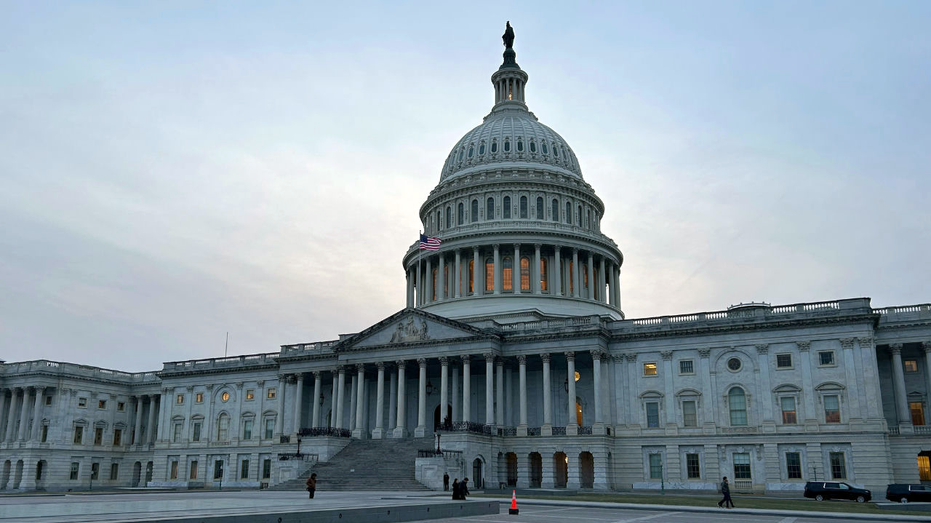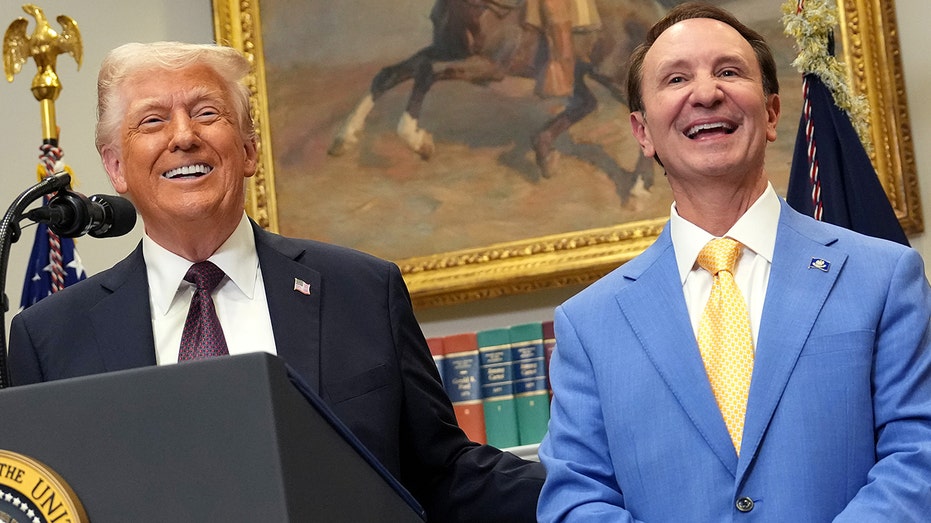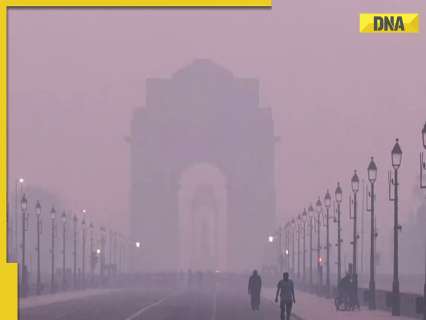Delhi Metro Phase 5A approved: 16-km corridor, 13 stations with Rs 12015 crore project cost

Once the project is completed, the Delhi Metro network will cross 400 km.
Five sleeper races that could upend 2026 – from the Alleghenies to the Land of Enchantment

As Clement Moore’s “‘Twas the Night Before Christmas” tells it, families sleep soundly as Santa approaches. As the new year nears, several election contests may prove just as quiet – until close results suddenly come into focus. Here are five potential sleeper races to watch in 2026: Rep. Bennie Thompson, the top Democrat on the House Homeland Security Committee, has not often had to worry about a general election challenge since he won a special election on April 13, 1993. Predecessor Mike Espy, who recently unsuccessfully ran for Senate in a narrow runoff with Sen. Cindy Hyde-Smith, R-Miss., had resigned to accept President Bill Clinton’s appointment as Secretary of Agriculture. Thompson’s closest race was that one – against Republican Hayes Dent – at 55% to 45%. Since then, Thompson has never looked back, and instead made himself a nationally-recognized figure later in his tenure. He chaired the House Select Committee on January 6 and recently went viral for calling the shooting of West Virginia National Guardsmen allegedly by an Afghan refugee an “unfortunate accident.” Thompson’s district, spanning from Jackson west to Yazoo City and Vicksburg on the Mississippi River, is one of the poorest in the country – landing at 3rd out of 435 with a median income of $37,372, according to data published by the office of Rep. Marcy Kaptur, D-Ohio. CONGRESSIONAL DEMOCRATS WIDEN 2026 BATTLEFIELD, ZERO IN ON NEW HOUSE REPUBLICAN TARGETS Only Rep. Hal Rogers, R-Ky., and Ritchie Torres, D-N.Y. preside over a poorer population. Last week, an attorney and former counsel to Sen. Charles Schumer, D-N.Y., mounted a surprise primary bid against Thompson. Evan Turnage, 33, who has been alive just about the same time Thompson has been in Congress, made the idea of fighting the region’s persistent poverty paramount to his new campaign, according to Black Press USA. “I’ve dedicated my life to leveling the playing field so people can not only get by, but get ahead, and raise a family right here,” Turnage said, according to the outlet. On the Republican side, retired Army captain and Vicksburg cardiothoracic surgeon Ron Eller will fight an uphill battle to unseat the winner of the Thompson-Turnage bout. Connecticut is another state that is typically not in political conversation as hosting nail-biter partisan elections. During the Bush-Clinton years, however, the state was competitive if not outright Republican-favored. Former Gov. John Rowland was the first in decades to be elected to more than two terms. He ended up resigning in 2004 amid the threat of impeachment over accusations contractors with the state were doing work on his vacation home. CALL TO DUTY: IN BATTLE FOR HOUSE, REPUBLICANS AND DEMOCRATS LOOKING TO VETERANS After he resigned, his wife famously wrote a poem critical of the media’s coverage of Rowland’s case, based on Moore’s holiday favorite and called “A Lump of Coal for All the Reporters.” Rowland’s lieutenant, Gov. M. Jodi Rell, took over and was re-elected once before retiring in 2010. Since then, the state has been reliably Democratic – save for former Sen. Joe Lieberman changing his affiliation to independent. In 2022, then-State Sen. George Logan – the first Black man elected to Hartford’s upper chamber – mounted a bid against Rep. Jahana Hayes and lost by less than one percentage point. DOUBLING DOWN: TOP HOUSE DEMOCRAT SAYS FOCUS ON HIGH PRICES ‘ABSOLUTELY GOING TO CONTINUE’ Logan tried again in 2024, but lost by a slightly wider margin. While Logan is not on the ballot at least yet for 2026, recent history shows Republicans could have an outside chance of ending Democrats’ full control of New England’s congressional delegation. Republicans have wanted to win back Maryland’s sixth congressional district ever since partisan gerrymandering was blamed for booting 20-year incumbent Rep. Roscoe Bartlett, R-Md., from office in 2012. Bartlett, an eccentric conservative who later relocated to the West Virginia wilderness to live off-the-grid, is now 99, and was known for addressing various topics that were sometimes ignored but have received newfound attention at present, including warnings about the strength, reliability and hardening of the U.S. power grid. Bartlett won his last reelection by 28 points but then lost by about 20 the following cycle after the rural district encompassing the entire Maryland Panhandle was adjusted to incorporate the edges of densely-populated Washington, D.C., suburbs. SHOWDOWN FOR THE HOUSE: DEMOCRATS, REPUBLICANS BRACE FOR HIGH-STAKES MIDTERM CLASH He was defeated in 2013 by then-Rep. John Delaney, a finance executive – before Delaney was replaced by Total Wine mogul David Trone, who has largely self-funded his campaigns to the tune of millions of dollars. Trone won re-election before opting in 2024 to pursue retiring Sen. Benjamin Cardin’s, D-Md., seat – which was ultimately won by Democrat Angela Alsobrooks. He announced this year that he would challenge Rep. April McClain-Delaney, D-Md., the wife of former Rep. John Delaney, in the district. Meanwhile, former longtime state Del. Neil Parrott, R-Antietam, is mounting his fourth consecutive bid for the seat. McClain-Delaney beat Parrott 53-47 in 2024. The closest that Republicans have gotten to taking back the seat since Bartlett was defeated came in 2014, when now-FBI Deputy Director Dan Bongino narrowly lost to Trone by about a point. Bongino notably sought to nationalize the race, pulling in endorsements like Sen. Rand Paul, R-Ky., and rebuking Delaney as someone who could “write himself a check for a million dollars” if he needed to in order to win. HOUSE GOP CAMPAIGN CHAIR WANTS TRUMP ‘OUT THERE ON THE TRAIL’ IN MIDTERM BATTLE FOR MAJORITY The future G-man suggested at the time he would rather knock on doors in far-flung communities like Oakland and Grantsville, where he said, “nobody seems to know who [John Delaney] is,” according to the Maryland Reporter. Given newly-drawn, friendlier maps following litigation over O’Malley-era gerrymandering, Republicans may have a chance to surprise in a district in one of the most Democratic-majority states in the country. While not typically considered a swing state, or one that gets much attention in federal elections, Nebraska’s only
Thackeray cousins reunite after 20 years: BIG announcement of Uddhav Thackeray led UBT Sena-Raj Thackeray led MNS alliance ahead of BMC polls, Eknath Shinde’s faction reacts

Amid the confirmation of the UBT Sena-MNS alliance, Shiv Sena (UBT) Chief Uddhav Thackeray and MNS Chief Raj Thackeray, accompanied by their wives, paid tribute to party founder Balasaheb Thackeray at his memorial in Shivaji Park here on Wednesday.
U.S. OCC Approves Federal Trust Charters for Major Crypto Firms, Ending the Banking Blockade

Over 2023-24, several US banks cut ties with crypto exchanges, stablecoin issuers, and custodians, forcing many firms to rely on a shrinking pool of correspondents and offshore entities for basic payment and settlement. This week, that phase ended.
YouTube Integrates Stablecoin Payments for Millions of Creators

YouTube has quietly taken one of the most consequential steps in the mainstream adoption of stablecoins. In mid-December 2025, the platform enabled eligible U.S. creators to receive payouts in PayPal’s PYUSD stablecoin, using PayPal’s existing Hyperwallet infrastructure.
Delhi Pollution Crisis: High Court calls out centre over 18% GST on ‘air purifiers’, says, ‘that’s minimum you…’

Amid the Delhi pollution crisis, High court on Wednesday called out the central government on their ‘inactive’ response to the immediate ’emergency’ in the national capital.
Judge gives ‘green light’ to controversial New York driver’s license law in blow to Trump admin

A federal judge on Tuesday cleared the way for New York’s so-called Green Light Law, ruling against the Trump administration’s effort to block the state from giving people driver’s licenses without requiring proof that they are in the U.S. legally. U.S. District Judge Anne M. Nardacci found that the Justice Department — which sued New York Gov. Kathy Hochul and state Attorney General Letitia James in February — had failed to prove its claims that the state law sought to invalidate federal law or that the measure unlawfully regulates or unlawfully discriminates against the federal government. “As I said from the start, our laws protect the rights of all New Yorkers and keep our communities safe,” James said in a statement. “I will always stand up for New Yorkers and the rule of law.” U.S. Attorney General Pam Bondi alleged when announcing the lawsuit that Hochul and James were prioritizing “illegal aliens over American citizens,” as the controversial state law blocks federal agents trying to enforce immigration laws from seeing illegal immigrants’ criminal driving records during traffic stops. SANCTUARY STATE’S ‘GREEN LIGHT’ LAW IS RED FLAG FOR AMERICANS’ SAFETY, NATIONAL SECURITY: EXPERTS Nardacci wrote in her ruling that her job was not to evaluate the desirability of the law as a policy matter, but to determine whether the Trump administration’s arguments prove its claims that the statute violates the U.S. Constitution’s Supremacy Clause, which establishes that federal laws overrule state laws. The administration has “failed to state such a claim,” Nardacci wrote. The Green Light Law, also known as the Driver’s License Access and Privacy Act, was adopted, in part, to improve road safety, as people sometimes drove without a license or without having passed a driving test. Under the measure, it is easier for these license holders to receive auto insurance. The law states that people who do not have a valid Social Security number can submit alternative forms of ID, including valid passports and driver’s licenses issued in other countries. Applicants must still receive a driver’s permit and pass a road test to qualify for a “standard driver’s license.” The legislation does not apply to commercial driver’s licenses (CDLs). BLUE STATE IN THE HOT SEAT AFTER ICE BUSTS ILLEGAL IMMIGRANT WITH ‘NO NAME GIVEN’ ON LICENSE The DOJ’s lawsuit argued that the law was “a frontal assault on the federal immigration laws, and the federal authorities that administer them,” citing a provision that requires the state’s DMV commissioner to notify people who are in the country illegally when a federal immigration agency has requested their information. The lawsuit further claimed that it could be easier to enforce the Trump administration’s immigration agenda if federal authorities had unrestricted access to New York’s driver information. The Green Light Law took effect in 2019, but came under renewed scrutiny following a fatal shootout in Vermont in January that left a U.S. Customs and Border Protection agent dead near the northern border with Canada after a traffic stop involving a German national. “Any information that can help law enforcement stay safe as they conduct their duties has pretty much been taken away with this Green Light Law,” Hector Garza, vice president of the National Border Patrol Council, told Fox News Digital at the time. “What [the Green Light Law] does, is that it prevents law enforcement agents from getting any type of information in regards to any registrations that the state has,” Garza added. “For example, before we engage in traffic stops, typically law enforcement will always conduct a vehicle registration check to see if there’s any warrants to see if that person is considered armed and dangerous.” But Nardacci, echoing an appeals court ruling in a county clerk’s earlier challenge to the law, wrote that the information “remains available to federal immigration authorities” through a lawful court order or judicial warrant. New York is one of a dozen states that allows illegals to drive. Fox News Digital’s Michael Ruiz and The Associated Press contributed to this report.
New Trump admin envoy says US won’t ‘conquer’ Greenland, emphasizes talks with locals as Denmark balks at move

President Donald Trump’s newly appointed envoy to Greenland said Tuesday the administration wants to open a dialogue with residents of the territory, stressing the U.S. is not seeking to “conquer” the island. During an appearance on Fox News’ “The Will Cain Show,” Louisiana Gov. Jeff Landry, who was tapped as special envoy to Greenland by Trump on Sunday, said discussions must be had with Greenlanders to understand what they want moving forward. “What are they looking for? What opportunities have they not gotten? Why haven’t they gotten the protection that they actually deserve?” Landry said. Landry added that the U.S. “has always been a welcoming party,” and that the Trump administration is not going to “go in there trying to conquer anybody” or “take over anybody’s country.” TRUMP MOVES GREENLAND MILITARY INSTALLATION UNDER US NORTHERN COMMAND IN ARCTIC POWER SHIFT Landry’s comments came after Danish leaders sharply criticized Trump after he announced the appointment of the new special envoy to Greenland, a territory controlled by Denmark. “We have said it before. Now, we say it again. National borders and the sovereignty of states are rooted in international law,” Danish Prime Minister Mette Frederiksen and Greenlandic Prime Minister Jens-Frederik Nielsen said in a joint statement Monday. “They are fundamental principles. You cannot annex another country. Not even with an argument about international security.” Trump wrote on Truth Social Monday that Landry “understands how essential Greenland is to our National Security, and will strongly advance our Country’s Interests for the Safety, Security, and Survival of our Allies, and indeed, the World.” DENMARK PM SAYS ‘YOU CANNOT SPY AGAINST AN ALLY’ FOLLOWING REPORTS OF US SPYING ON GREENLAND On Tuesday, Danish Foreign Minister Lars Løkke Rasmussen called Trump’s comments “completely unacceptable,” adding that he would summon the U.S. ambassador. The Danish kingdom, he wrote on Facebook, is “sovereign and cannot accept that others question it.” Trump has previously expressed ambitions for the U.S. to acquire Greenland, posting on Truth Social in December 2024 that “ownership and control of Greenland is an absolute necessity” for national security purposes. In another post from January 2025, Trump said Greenland is an “incredible place,” and its people will “benefit tremendously if, and when, it becomes part of our Nation,” before declaring, “MAKE GREENLAND GREAT AGAIN!” Fox News Digital has reached out to the White House for comment. Fox News Digital’s Alex Nitzberg and The Associated Press contributed to this report.
BIG Boost to Uttar Pradesh: THESE 9 districts to get 12 new industrial units, CM Yogi’s gives nod to Rs 1518900,00,000 investment plan, here’s all you need to know

The Uttar Pradesh cabinet on Monday approved investment proposals worth Rs 15,189.7 crore for setting up 12 mega and super-mega industrial units across nine districts of the state. The decision was taken at a cabinet meeting chaired by Chief Minister Yogi Adityanath at his official residence.
Delhi-NCR wakes up to ‘very poor’ air quality, AQI reaches…; Govt announces new measures for pollution

The Air Quality Index (AQI) around the ITO area was recorded at 374, categorised as ‘very poor’, according to the Central Pollution Control Board (CPCB) on Wednesday.

